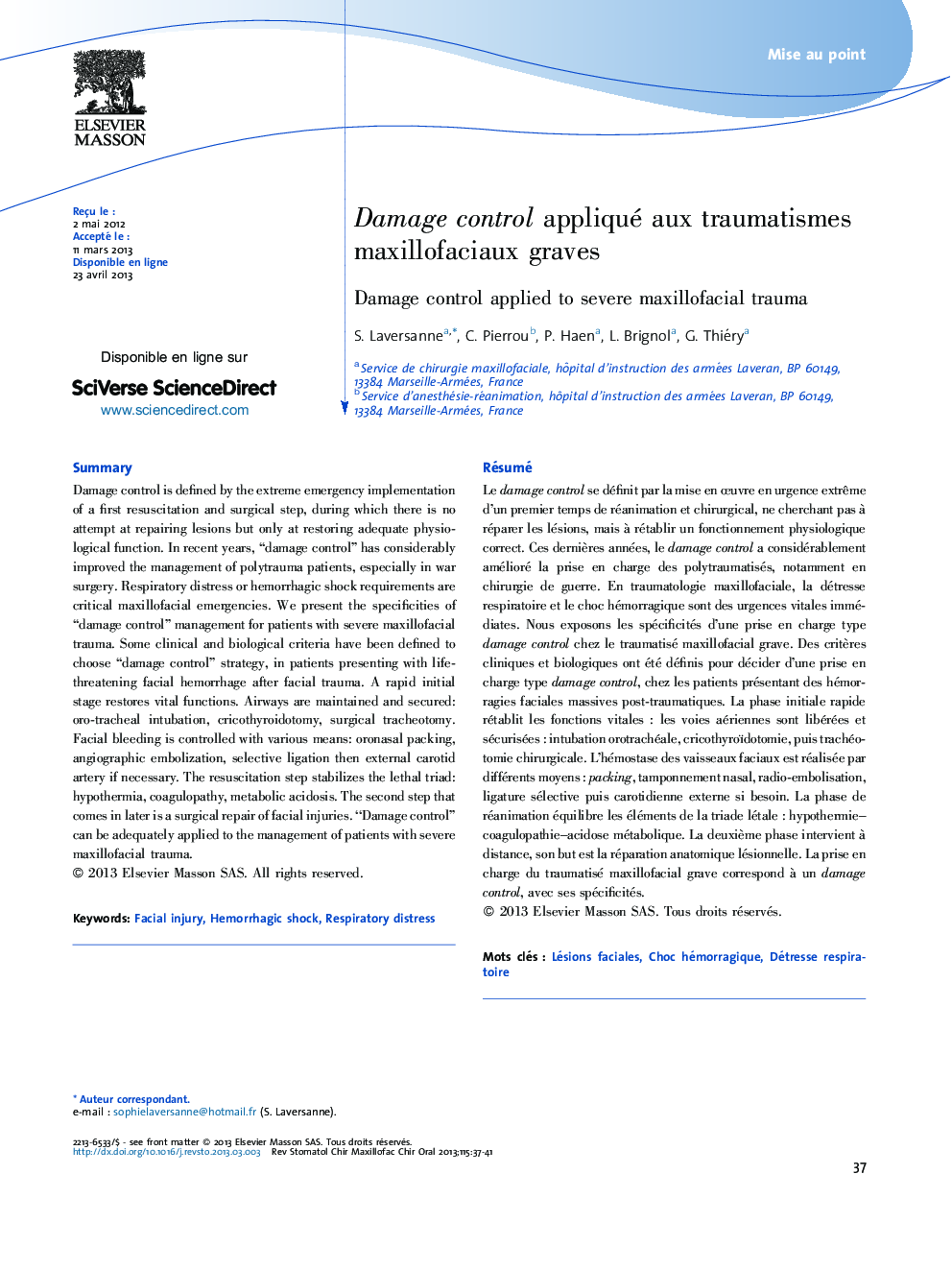| Article ID | Journal | Published Year | Pages | File Type |
|---|---|---|---|---|
| 3175049 | Revue de Stomatologie, de Chirurgie Maxillo-faciale et de Chirurgie Orale | 2014 | 5 Pages |
Abstract
Damage control is defined by the extreme emergency implementation of a first resuscitation and surgical step, during which there is no attempt at repairing lesions but only at restoring adequate physiological function. In recent years, “damage control” has considerably improved the management of polytrauma patients, especially in war surgery. Respiratory distress or hemorrhagic shock requirements are critical maxillofacial emergencies. We present the specificities of “damage control” management for patients with severe maxillofacial trauma. Some clinical and biological criteria have been defined to choose “damage control” strategy, in patients presenting with life-threatening facial hemorrhage after facial trauma. A rapid initial stage restores vital functions. Airways are maintained and secured: oro-tracheal intubation, cricothyroidotomy, surgical tracheotomy. Facial bleeding is controlled with various means: oronasal packing, angiographic embolization, selective ligation then external carotid artery if necessary. The resuscitation step stabilizes the lethal triad: hypothermia, coagulopathy, metabolic acidosis. The second step that comes in later is a surgical repair of facial injuries. “Damage control” can be adequately applied to the management of patients with severe maxillofacial trauma.
Related Topics
Health Sciences
Medicine and Dentistry
Dentistry, Oral Surgery and Medicine
Authors
S. Laversanne, C. Pierrou, P. Haen, L. Brignol, G. Thiéry,
